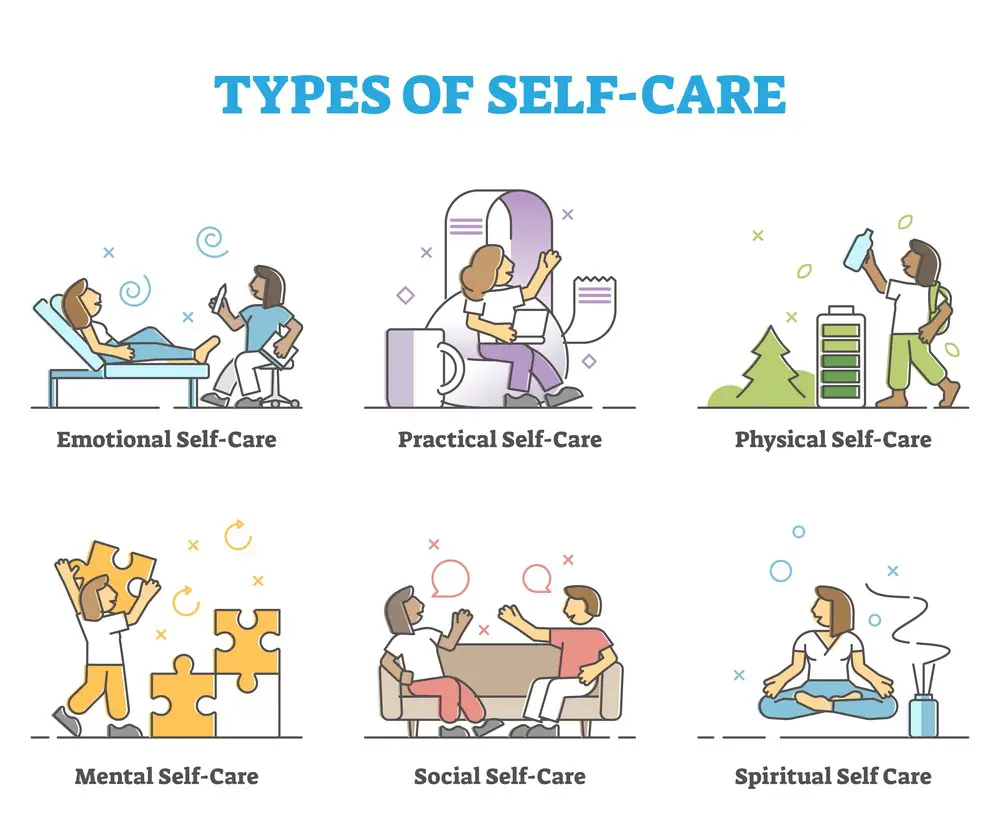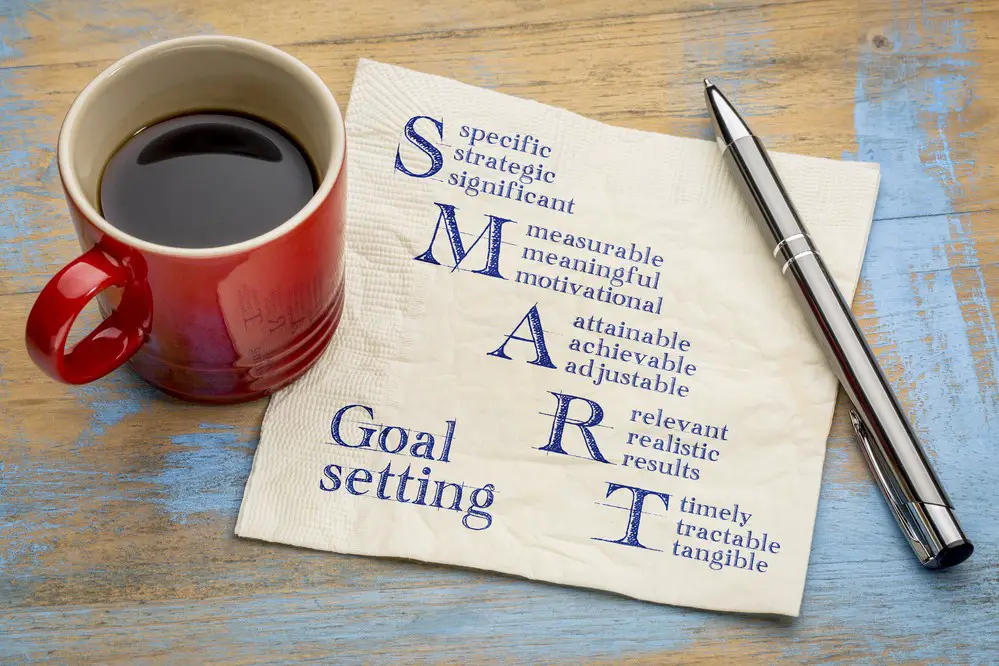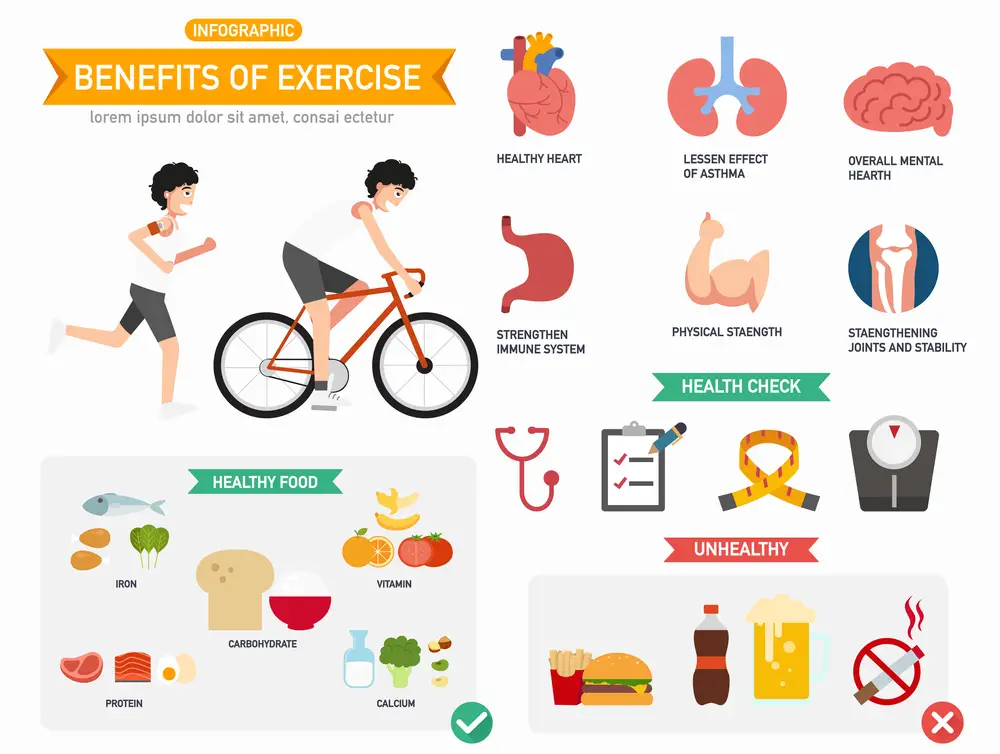As a BetterHelp affiliate, we receive compensation from BetterHelp if you purchase products or services through the links provided
This post was developed via a partnership with BetterHelp
Regular physical activity is crucial for maintaining good mental well-being. It is an important aspect of basic health habits that promote physical and psychological health. Although starting a long-term workout routine can be challenging, taking small steps toward physical activity is likely to be useful. Walking, for instance, is an easy form of exercise that requires no equipment and can be done anytime. You can take a short walk during a break or park further away from your destination. In this article, we will discuss the significance of exercise and how to set better physical activity goals.
The benefits of exercise
 Many people are already familiar with the benefits exercise has on physical health. Regular physical activity improves body composition, lowers cancer risk, improves cardiovascular function, and may help manage some chronic diseases. Fewer people may be aware that exercise has many mental health benefits in addition to physical ones. Regular exercise is considered a foundational part of a good self-care routine, making it all but essential when seeking to improve your mental health.
Many people are already familiar with the benefits exercise has on physical health. Regular physical activity improves body composition, lowers cancer risk, improves cardiovascular function, and may help manage some chronic diseases. Fewer people may be aware that exercise has many mental health benefits in addition to physical ones. Regular exercise is considered a foundational part of a good self-care routine, making it all but essential when seeking to improve your mental health.
Physical activity has both short and long-term benefits. Short-term benefits, like a briefly improved mood, tend to appear during and after a workout and may last several hours. Long-term benefits, which are more robust, tend to occur when physical activity routines have been sustained for at least a few weeks. Evidence suggests that regular exercise increases a person’s resilience to stress, lowers the risk of anxiety and depression, improves mood, and results in an overall higher quality of life.
Exercise might also help reduce cravings for harmful substances like alcohol. It is typically recommended that those recovering from a substance use disorder incorporate an exercise routine into their recovery plan. In addition to lowering the risk of developing a mental health condition, exercise has demonstrated utility as a treatment for many mental health disorders, such as anxiety, depression, and PTSD.
Getting into a workout routine
 As many people have discovered, transitioning from a sedentary lifestyle to a physically active one can be challenging. It will likely be helpful to start with what is reasonably achievable. You might consider using the SMART goal system to set fitness goals. SMART is an acronym that describes an evidence-based approach to goal-setting that will likely boost goal attainment. The system is described below:
As many people have discovered, transitioning from a sedentary lifestyle to a physically active one can be challenging. It will likely be helpful to start with what is reasonably achievable. You might consider using the SMART goal system to set fitness goals. SMART is an acronym that describes an evidence-based approach to goal-setting that will likely boost goal attainment. The system is described below:
- Goals should be specific and easy to interpret. It should be easy to describe your goal to another person.
- You should be able to track your progress toward your fitness goal. Whether it’s miles run, weight lifted, or crunches crunched, you should be able to quantify your goal.
- Don’t set a goal that’s beyond your reach. At the same time, try to avoid picking a goal that’s too easy. You can always adjust your goals to find a sweet spot between challenging and unobtainable.
- Your goals should move you forward toward your broader fitness targets.
- Time-bound. Evidence suggests people are more likely to achieve their goals if they set a deadline. Make sure to choose a reasonable deadline in which to complete your goal.
Many people set broad and ambitious goals when starting a new fitness routine. It’s important to have lofty goals to aspire to, but the path should be lined with SMART goals that help scaffold your progress. A goal like “I will be more fit” is too broad to be a SMART goal, and if that is all that guides you on your path to fitness, it will likely be more challenging to keep yourself motivated. Similarly, a goal like “I will lose 100 pounds” is too lofty. It will likely be difficult to gain intrinsic rewards from your progress because the goal takes so long to complete.
A good intelligent fitness goal might sound like, “I will run three miles per day for three days per week. I will achieve this goal within four weeks.” The goal is specific, progress is easy to measure, and, for the sake of argument, achievable. It is also related to fitness and has a firm deadline. Your specific goals will vary based on your current level of physical fitness and how quickly you want to achieve your goals.
Other ways to stay motivated
 Workout routines generally become easier to maintain over time. As your body adjusts to the initial sudden increase in physical activity, you’ll likely find it easier to hit your fitness goals. However, motivation is closely related to mental health, and if you’re challenged by stress, anxiety, depression, or many other conditions, it may be harder to stay motivated.
Workout routines generally become easier to maintain over time. As your body adjusts to the initial sudden increase in physical activity, you’ll likely find it easier to hit your fitness goals. However, motivation is closely related to mental health, and if you’re challenged by stress, anxiety, depression, or many other conditions, it may be harder to stay motivated.
If you struggle to stay motivated during exercise or consider motivation generally challenging, speaking with a therapist or other mental health professional may be worthwhile. Therapists are well-qualified to help address motivation-related issues, help you build healthy habits, and investigate underlying causes that may make it hard to commit to your goals. Check out this article from the online therapy service BetterHelp for more information about how therapy works and how it might benefit you.
You might also consider scheduling an appointment with your primary care provider. Occasionally, a person may struggle to find the energy they need for a workout routine due to an underlying medical issue rather than a mental one. It may be worthwhile to go in for a checkup and talk to your medical provider about your fitness goals; they can likely offer support and guidance.
- 7 Ideas to Help You Relax and Unwind on a Family Vacation - April 27, 2025
- How Having Cybersecurity Protection Helps You Relax - April 25, 2025
- 8 Reasons Why Spending Time Outside Calms You Down - April 25, 2025
This site contains affiliate links to products. We will receive a commission for purchases made through these links.



